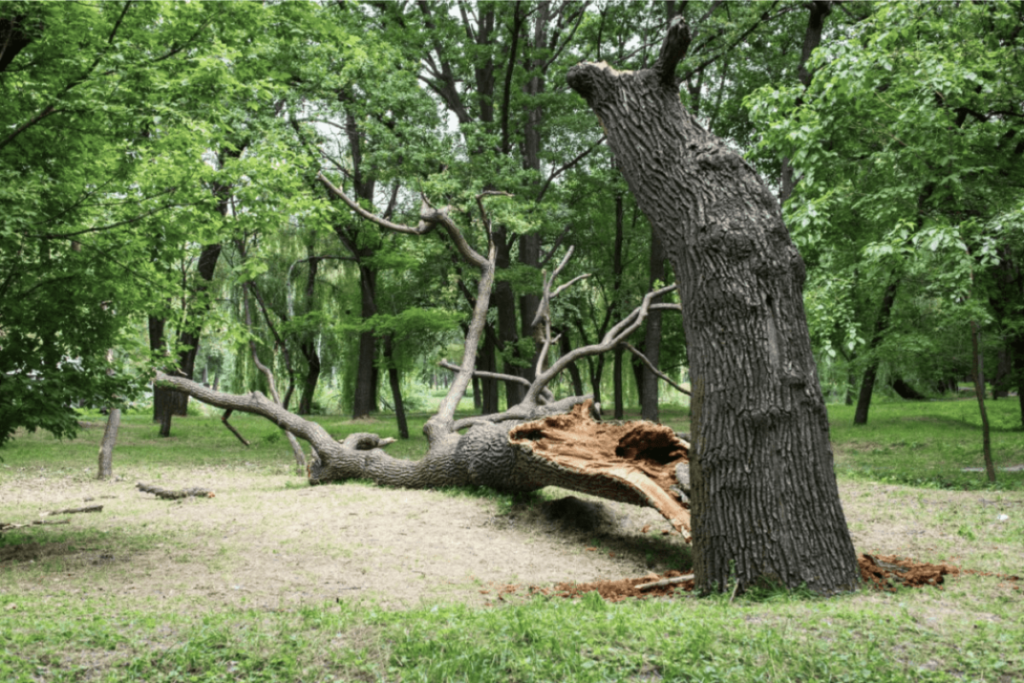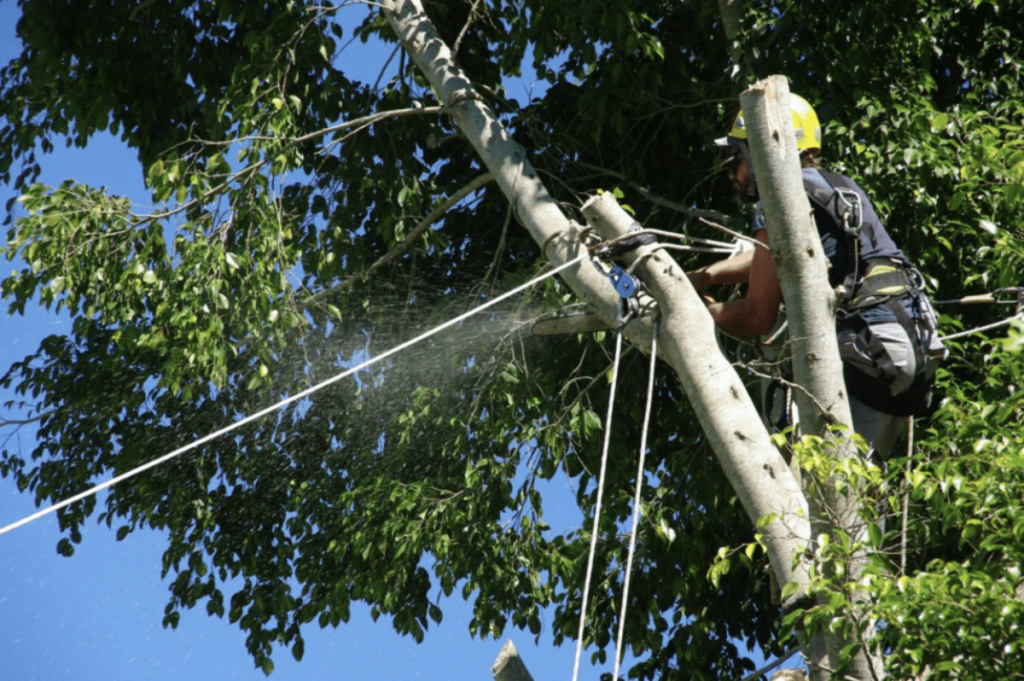Wood-boring insects are among the most destructive pests of trees and shrubs. They can tunnel and feed under the bark in living wood, destroying important tissues. This causes girdling, branch dieback, structural weakness, and decline and eventual death of the tree. At Red’s Tree Service, we want to help you protect your trees from any critters that may pose a threat. To help you out, let’s take a look at common insects that may cause damage to your property’s greenery.
Gypsy Moth
The exotic gypsy moth is one of the most notorious pests of hardwood trees in the Eastern United States. The gypsy moth larvae have damaged nearly a million or more forested acres each year. The insect lays visible buff-colored egg masses as leaves emerge in the spring. These masses hatch into hungry larvae that quickly defoliate trees. Several deflorations can frequently kill trees under stress.
Emerald Ash Borer
The emerald ash borer is a wood-boring beetle discovered in Michigan in 2002. This insect is known for killing millions of ash trees annually and forcing regional quarantines on exporting firewood and tree nursery stock in several states. This ash borer could potentially decimate arboricultural ash plantings, and natural ash stands in the eastern United States. The larvae of this borer feed on the cambial bark. These S-shaped feeding groups will kill limbs and can ultimately girdle the tree.
This insect has several common symptoms in trees. You may see cracks on the canopy’s main branches in the early stages. As the infestation develops, you’ll find thin, 2-5-inch vertical slits in the bark and D-shaped holes in the bark, and the canopy will begin to thin.
Locust Borer
The locust borer can be found anywhere black locust trees are found. Black locusts are native to many eastern and southern states, including Alabama, Arkansas, Georgia, Kentucky, North Carolina, South Carolina, Tennessee, Virginia, and West Virginia.
One indicator of a locust borer infestation is a swell on the trunk or a branch that looks like a knot. Other symptoms include:
- Several broken branches.
- Thinness in the top part of the tree.
- Exit holes in the bark.
- Sawdust at the base of the trunk.

Longhorn Beetles
found around the world. One example is the invasive Asian longhorned beetle, which has destroyed trees in isolated populations in eastern states like Illinois, New Jersey, New York, and Ohio that have been subject to eradication. Other species like the red oak, linden, and redheaded ash borers are native to the United States. Longhorned beetles have a few common symptoms, including discolored leaves, sawdust at the base of the tree or on branches, and round holes throughout the tree’s trunk.
A variety of trees are susceptible to longhorned beetles, which generally colonize only severely stressed trees. Examples include oak, linden, maple, poplar, willow, elm, and ash.
Elm Bark Beetle
The native elm bark beetle, also known as the European elm bark beetle, is critical for the overland spread of Dutch elm disease (DED) and is worthy of being included in this “worst” list. This beetle does not harm a tree with its boring but by transporting a deadly tree disease.
The DED fungus is transmitted to healthy trees in two ways: First, this bark beetle sends spores from diseased to healthy trees. Secondly, root grafting can also spread the disease when elms are tightly spaced. None of the native North American elms are immune to DED but the American elm is especially susceptible.
Tent Caterpillars
Tent caterpillars are typically first seen in the spring in eastern U.S. forests. However, they can be found anywhere with plenty of greenery! Two common types are the eastern tent caterpillar and forest tent caterpillars. The eastern tent caterpillar makes its nest in the fork of branches. The forest tent caterpillar builds no tent but is the most destructive of the two. The common territory of tent caterpillars is wild cherry but oaks, maples, and many other shade and forest trees are attacked. The forest tent caterpillar can strip extensive stands of trees of all leaves. The attacked tree’s growth can be severely affected by this.
There are a few of the most common types of wood-boring insects that may threaten the health of your trees. When you need to inspect for pests, it helps to have the right experts to help you out. Red’s Tree Service has the experience and expertise to keep your trees and shrubs healthy and critter-free.

Give your property the best with Red’s Tree Service
With Red’s Tree Service’s all-inclusive commercial tree service, your property will be safe from any potential threats. No matter what your trees and shrubs need to stay healthy and vibrant, our commercial tree service covers everything you need.
With over forty years of experience, our family-owned and operated tree service delivers you the best results. We have the tools, experience, and equipment to take care of your trees and leave your yard safe, healthy, and beautiful for years to come. Contact Red’s Tree Service in Memphis, Collierville, and the Mid-South area for your free estimate today!
